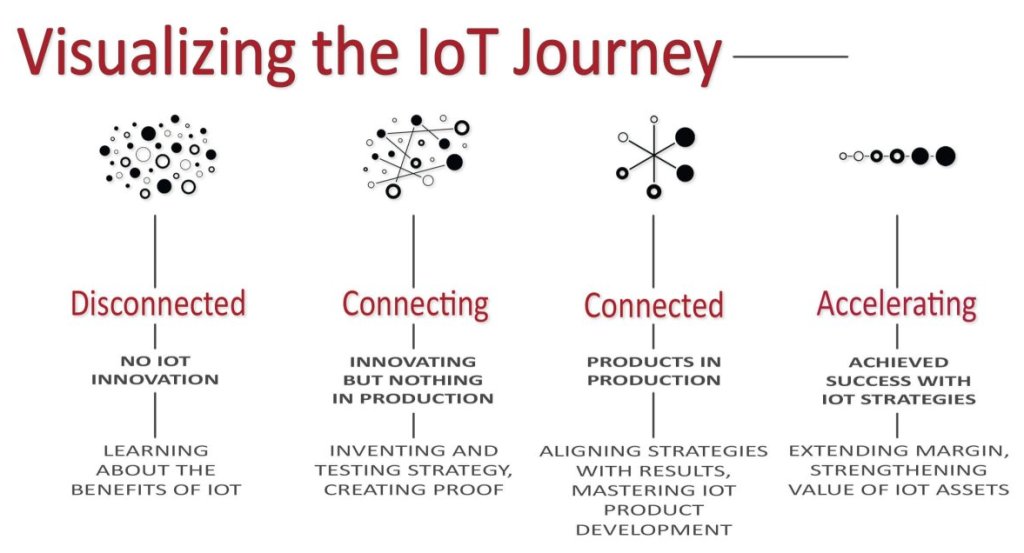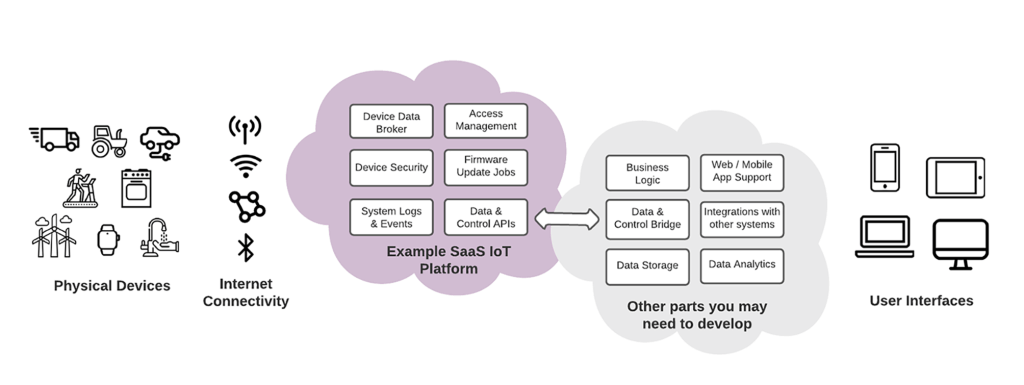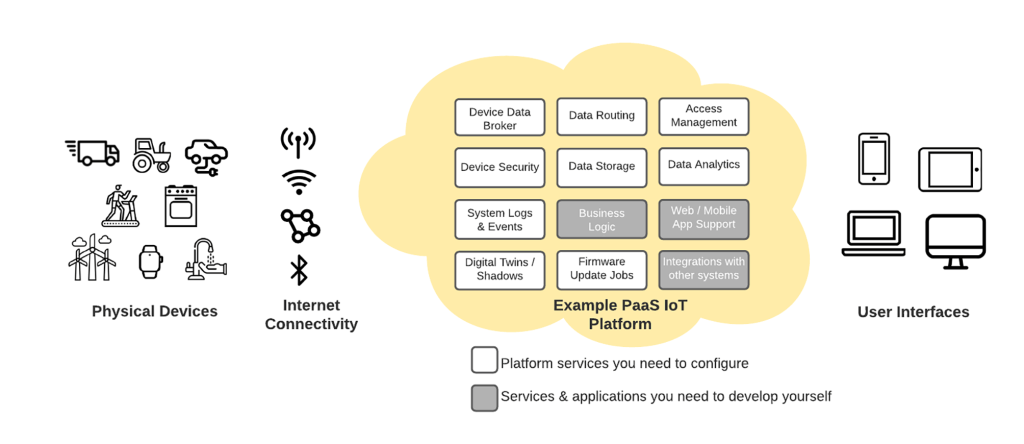In the age of hyper-connectivity, the Internet of Things (IoT) technology has provided countless innovators the opportunity to build software and hardware for different purposes — from medical smart devices and manufacturing to smart cities and homes.
According to Statista, 15.9 billion connected devices will be connected worldwide by 2030. The global IoT spending will reach $1.1 trillion the same year. However, the growing number of IoT apps has also increased the amount spent by businesses to recall defective IoT devices.
You see, developing an IoT device is the only step towards ensuring its longevity. It is also essential to conduct proper QA testing to ensure the IoT software is strong enough to withstand security threats, performance malfunction, and connectivity issues.
Your IoT device should work collaboratively and deliver value to the business as intended at the end of the day. In this article, we will discuss the definition, benefits, process, and types of IoT testing. But first, let us start with the basics:
What is IoT testing?
The general IoT network connectivity comprises four core layers, including the physical layer (sensors and controllers), network layer (gateways and communication units), data management layer (local or cloud services at the backend), and the application layer (software for user interaction).
Since data is heavily transmitted from one object to another over the Internet in the ecosystem, it is vital to verify that your electronic devices can exchange sensitive information easily before the market launch and throughout their lifecycle.
That is why all successful IoT businesses rely on automation, penetration, and performance testing tools to spot any defect in the IoT device before it reaches the hands of end customers.
IoT testing is the practice of conducting QA tests to validate the performance, minimize security issues, and boost the functionality of an IoT device. It broadly revolves around device networks, operating systems, security, analytics, platforms, and standards.
QA testers trace and associate software releases and cycles, test cases and scripts, look for defects, test executions, and gather other requirements. The complexity and variability of IoT testing make planning a crucial aspect of the process.
The significant benefits of IoT testing
QA engineers and developers can provide better service offerings by employing IoT automation testing in their general practices with the right plan and purpose in place. These are the benefits that they can plan to see with IoT testing:

1. Faster time-to-market
IoT testing ensures that businesses can launch their safe and approved IoT products in the market by leveraging automation.
2. Business future-proofing
IoT testing offers an integrated approach for validating IoT platforms' practical and non-functional testing requirements. The practice future-proofs the business by enabling higher interoperability and security with performance testing tools. In the end, you can deliver safer solutions and, therefore, be a better prospect for consumers.
3. New business opportunities
Testing the IoT solutions speeds up innovation with less risk and without delaying the response time or using too many resources. With set testing processes, businesses can experiment much more freely with IoT products in the market with minimal human intervention.
IoT testing framework
Given the complexity of IoT solutions, check all layers separately, verify the entire system's operation, and determine the interoperability level of several layers. Please refer to a robust testing framework to ensure the testing is done properly across all software versions. Some fundamental features that should be a part of the framework are listed below:

1. Performance testing
It is essential to strategically approach the development and implementation of an IoT testing plan. That is why measure the IoT app's performance metrics such as throughput, CPU utilization, latency, and so on. Validate the stability of the entire app's functioning under changing operational and network conditions such as intermittent failures.
2. Security testing
Testing how safe and secure an IoT app functions is paramount. After all, many users access a massive amount of data all the time. You must, therefore, have data privacy controls and validate users via authentication as a part of your security testing processes.
3. Compatibility testing
Multiple devices are connected in a typical IoT ecosystem with different software and hardware configurations. Please ensure your IoT product is highly compatible with different tools and platforms for its smooth functioning.
Use data recorders, for instance, to check out how the recorded data plays across different device end-points automatically and freely.
4. Device interoperability
IoT testing ensures that the end customers have a state-of-the-art user experience across multiple channels such as web apps and mobile devices.
Visualize the required use cases and arrange the testing process. For instance, all layers should be checked for security and functioning separately. Then deploy APIs to review the application and data management layers. Test the physical and network layers for compatibility.
Seven types of testing tools
To execute a wide range of IoT tests at the staging phase, use the right automation, visualization, simulation, and measurement tools. Here are the different IoT testing tools that can make a ton of difference to how you approach the process:
1. Device or protocol simulators
As the name suggests, these IoT testing tools are often simulated in large numbers and configured to map the required real-time scenarios. The simulators are standards-compliant and support numerous IoT protocols in format testing processes.
2. Record and playback test automation tools
These tools are multi-purpose as QA testing teams find them useful in many test scenarios. The assessment involves recording a user's actions and matching objects behind the scenes to identify which units of code are routinely used and how. In this type of testing, a coded test script file is generated, which the QA engineers replay as is.

3. Mobile testing tools
These IoT testing tools offer automated functional mobile testing, replicating customer experience and ensuring the IoT app works as expected.
4. API testing tools
Integrate an automated API testing tool with your continuous integration pipeline for improving your IoT app's codebase quality. Detect bugs early on in the IoT app development lifecycle with end-user application testing.
5. Visualization tools
The real-time validation of the IoT application is difficult and time-consuming. Introducing IoT data visualization tools can help finish the development process faster with minimal dependence in the real-time environment.
That is because they initiate the cost-friendly and timely execution of compatibility tests without making any hefty investments in the hardware, browsers, platform services, operating systems, and so on.
6. Automated deployment tools
Automation testing tools help create virtual machines on the cloud or on-premise for rapidly commissioning managed services and configuring and deploying customized applications and services. Improve speed, productivity, and effectiveness of quality over execution.
7. Security testing tools
These can be categorized as static code analysis, threat modeling, and run-time threat-inducing. Unearth vulnerabilities, prioritize them, and offer recommendations on how to fix them with the help of security testing tools.
The ultimate IoT testing process
An IoT setup deploys various software testing approaches that are slightly different from the regular QA practices for validating IoT apps. Here is what a typical IoT testing process looks like:
1. Lay the groundwork with the help of QA engineers
Assign a QA testing team while the specifications for the IoT application are being decided. Having them on board at the beginning will help them choose how often the IoT development team will need to collaborate with the QA engineers to prioritize relevant test cases, enable regressing testing, and efficiently manage defects.
They will also confirm the IoT testing risks and design an overall risk mitigation plan for your IoT app development project. Taking the QA team's help ensures proper test automation frameworks and configuration to address quality issues and whatnot.
2. Prepare for IoT app testing
Even when the QA team has designed a comprehensive testing strategy, they are still required to regularly revise and update the test artifacts. It would help if you also had a balanced combination of manual and automated testing to make sure the IoT app is error-free and to avoid data- and time-intensive repetitive test cases execution.
Prepare for conducting different types of testing, including conducting usability testing, simulating sensors, verifying data integrity, determining the end-to-end workflows of the entire IoT application, and flawless communication between various IoT app components with their tech stack compatibility.

3. Select a vendor for outsourced IoT testing
If you do not wish to carry out the function in-house, consider outsourcing as it proves to be more cost-effective than hiring a full-time staff. Plus, you have access to a greater talent pool and technological expertise. IoT testing becomes hassle-free. To select a fitting vendor of automation testing tools, please do the following:
- Shortlist vendors with successful IoT testing projects in your sector.
- Create a comprehensive request for proposal which includes your IoT solution's specific requirements.
- Consider their existing tech stack and human resources, so you do not get stuck in the middle of running tests.
- Understand their approach to an IoT testing strategy, testing toolkit, the planned test automation, and so on.
4. Launch your IoT tests
Once you have figured out your resources, it is time to design test cases and build test scripts. Check the end-to-end functioning of the IoT product by creating an IoT test lab with the help of service visualization tools. These labs serve as the digital portfolio for experimenting and simulating real-time experiences that fuel more innovative automation testing tools.
Over to you
IoT solutions can be challenging to develop, manage and test given the multiple components and interactions between them. It is, therefore, necessary to monitor the performance of the app more closely with automation testing tools. A thorough testing process ensures a quality IoT product and high customer satisfaction. So, how do you plan to get started with IoT testing?
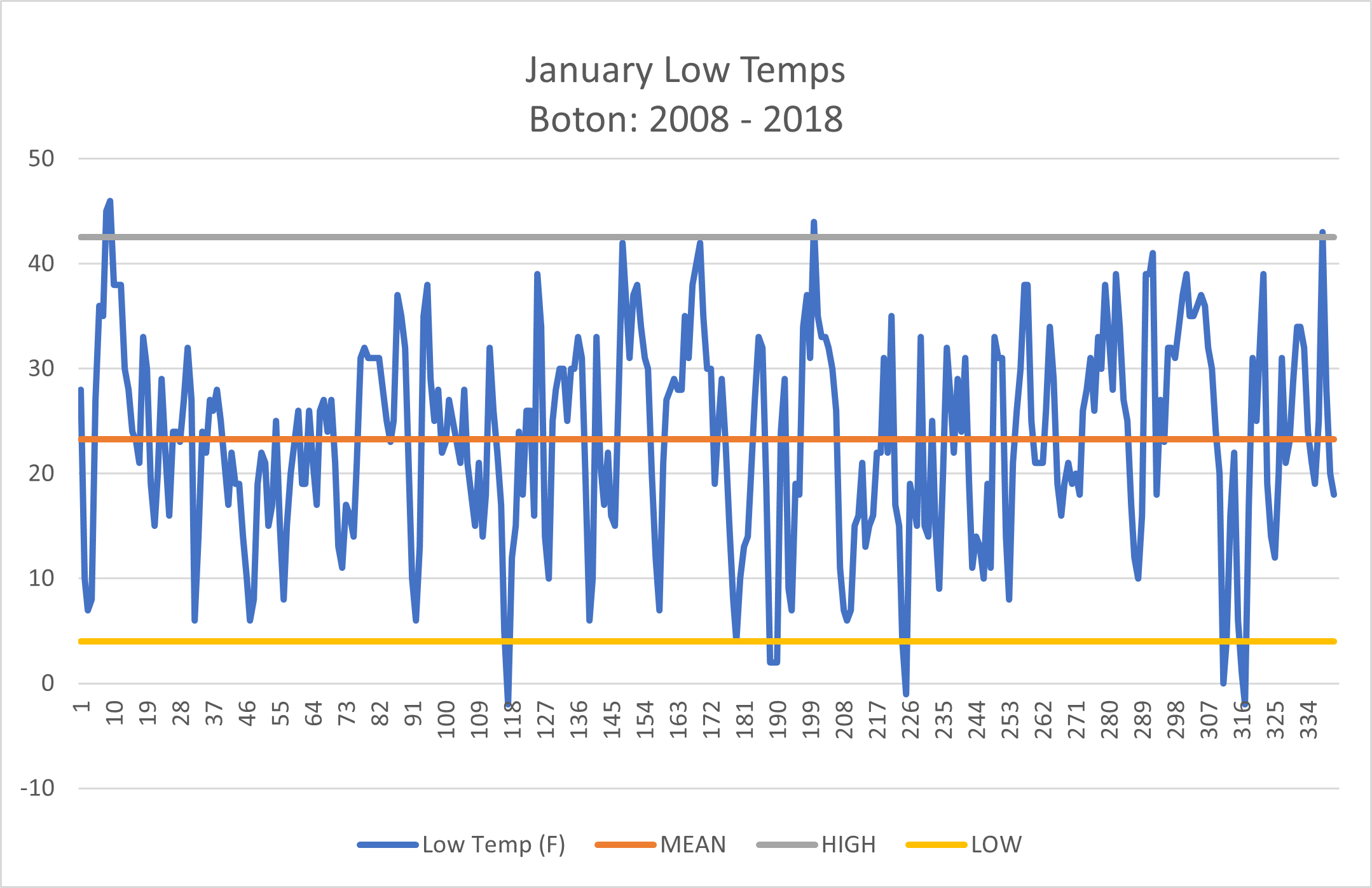
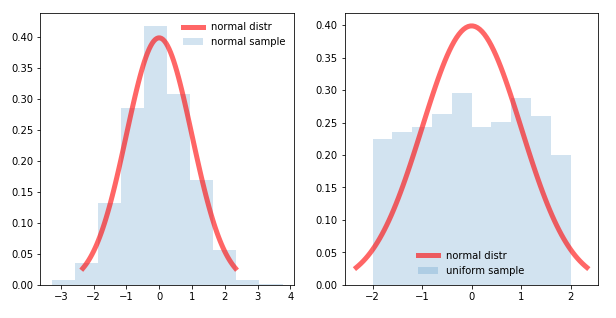

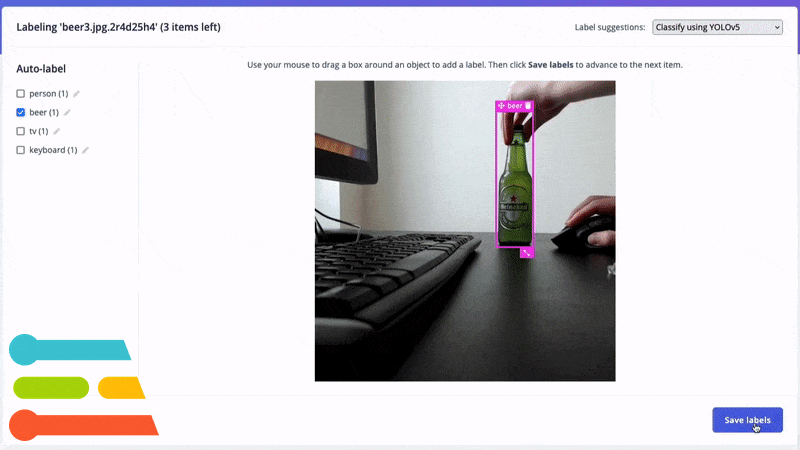 Automatically label common objects with YOLOv5.
Automatically label common objects with YOLOv5.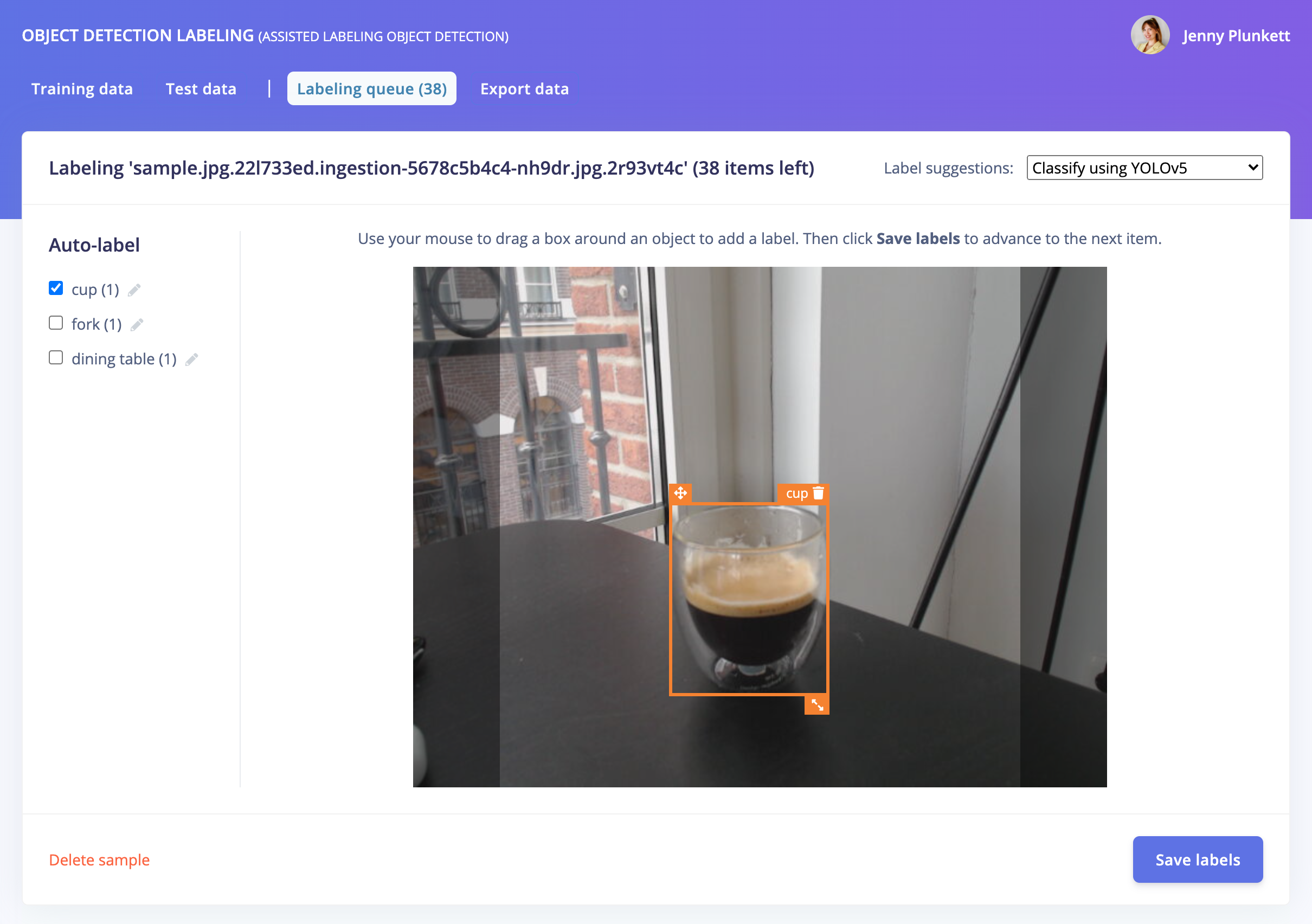
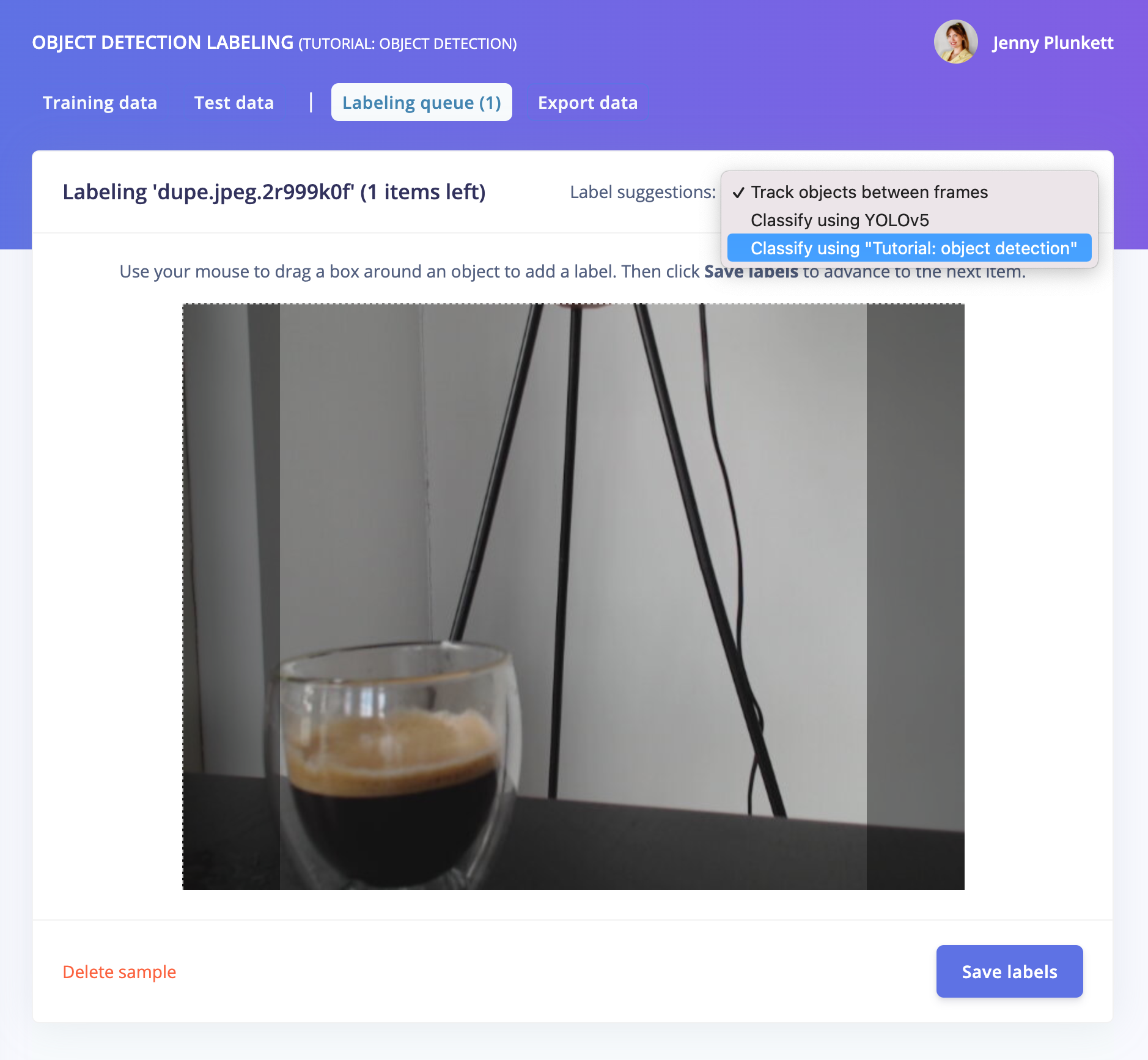
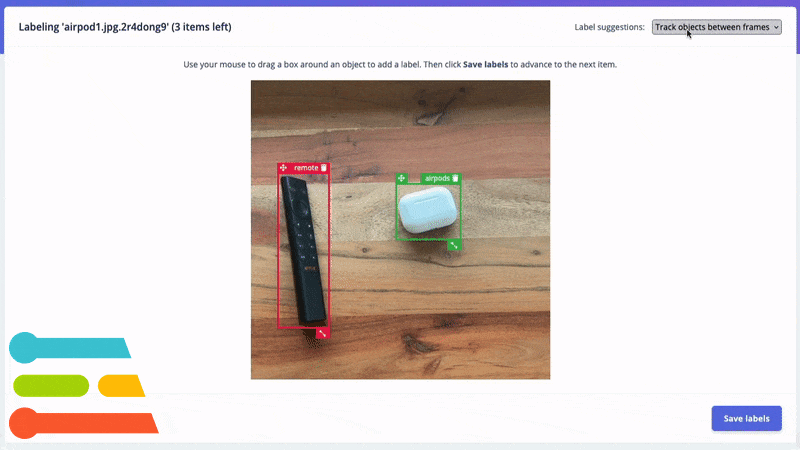 Track and auto-label your objects between frames.
Track and auto-label your objects between frames.
